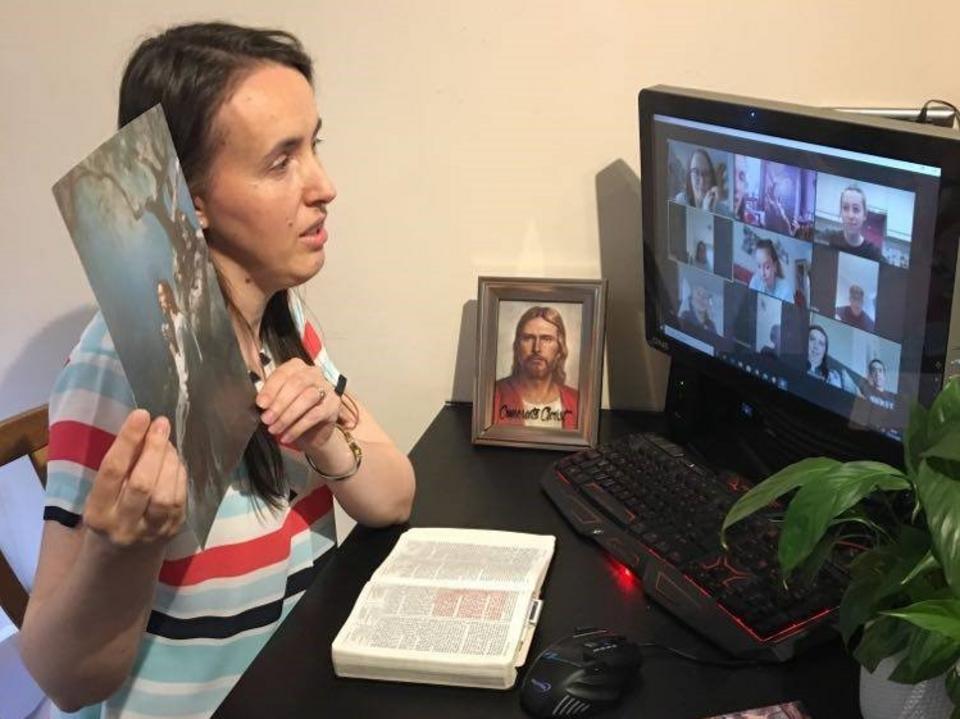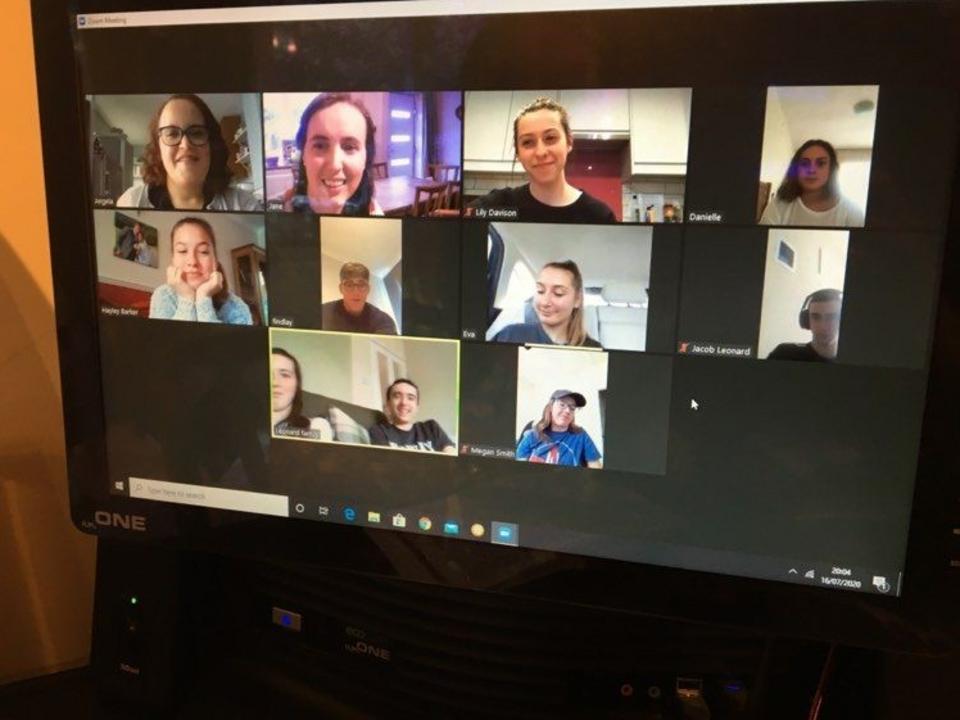Throughout the world, seminary is bringing youth closer to Jesus Christ. Seminary refers to religious education programmes for youth of The Church of Jesus Christ of Latter-day Saints aged 14 through 18. Hundreds of thousands of youth around the world have had to adjust how they attend seminary with the restraints of COVID-19. It quickly became necessary for teachers and leaders to think of different ways to teach and interact with their students other than the traditional classroom. Most classes are held in the early mornings before their regular school day begins. This is a sacrifice these young people are willing to make as they seek greater knowledge of Jesus Christ and His gospel.
Attending seminary requires sacrifice, but youth throughout the world are finding that seminary participation is worth every effort. And those who participate have something in common: their seminary experience brings them closer to the Saviour and to our Heavenly Father.
Sister Charmaine Anderson, a full-time missionary serving in Frankfurt, Germany, was teaching early-morning seminary with her husband, Elder Russell Anderson when the pandemic in Europe hit. “We taught a group of about 16 students from the Frankfurt International School at 7:00 a.m. three days a week, as well as a Thursday evening class. In mid-March, when the restrictions of COVID-19 prohibited gatherings of large groups in Germany, it was time to think outside the box. Now we were teaching a combined class of 30 students which included those from the European School. We used different teaching styles to keep the students engaged, which can be a challenge in the early mornings.”
“Once the students returned to school in mid-May, we transitioned from teaching with Zoom to giving daily reading assignments with questions to answer so they could get ‘credit’ for attending that day,” continued Sister Anderson. One family commented on how this daily study assignment soon became a family study opportunity bringing them closer as a family.
One of the Anderson’s 16-year old students, Bronte Patch, said, “At first it was pretty weird, but it worked out well. The downside was not being with my friends and the class discussion didn’t go as well. But it was nice to sleep in later and [be] in the comfort of my own home. It was nice to have my personal scriptures to refer to, also. Normally I would use my phone, so I didn’t have to carry my scriptures with me the rest of the day.”
Several of the parents taught a few days a week which helped switch things up for the students. Gretel Patch, Bronte’s mother, taught the class on occasion and said she thought that having the Zoom classes were definitely worth doing. “The students were good sports as they were doing their school classes via Zoom, as well. Class discussion didn't flow as easily, and I had to get creative to foster more interaction. For example, I sent out an online form with a few questions in advance via group chat. Most students responded, and their answers provided some good insights that we could then look at together."
Lily Davison, attending a joint class of eight students, just completed her fourth year as a seminary student in Leeds, England. Her online class began meeting in mid-April at 9:30 a.m. and then changed to 4:30 p.m. because of school commitments. Flexibility was one of the advantages of Zoom classes. “Although the format was similar, I really missed the personal interaction with my friends. As a body of saints, we have the opportunity to socialise and have that sense of community.”
As one of the two students who graduated this year from her seminary class, Lily was asked to speak at their Zoom Graduation Ceremony. Her talk was based on her favourite Doctrinal Mastery scripture, which reads, Look unto me in every thought; doubt not, fear not. (Doctrine and Covenants 6:36) “The main thing I take from this scripture is the ever-present comfort, boundless love and infinite wisdom which awaits us when we ‘Look unto’ Him - our Heavenly Father, and the Saviour Jesus Christ, in EVERY thought. I really love that too, EVERY thought.”
“We had almost 100% attendance having class online, so that was a positive outcome. I have learnt that whether meeting in person or online, what I put into my study is what I get out of it. When I am more committed and focused, I can better understand what is being taught.”

Teacher.jpg
Using visual aids to enhance her teaching, Jane Leonard teaches her class via Zoom.© 2020 by Intellectual Reserve, Inc. All rights reserved.Jane Leonard, one of Lily’s teachers, has been teaching seminary for six years. “Our goal as teachers is to be their friend, in addition to their teacher. We genuinely care about them, their goals, and aspirations. We message them when they are absent to let them know they were missed. We already had a Facebook Messenger group set up with our students and their parents before the COVID-19 restrictions forced us to meet online. We used that group chat to post the lesson’s reading assignment as well as quotes and videos pertaining to the lesson. Having the parents on board helped the learning experience.”

Class-over-Zoom.jpg
Students interact with one another as they learn more about the Saviour during the pandemic© 2020 by Intellectual Reserve, Inc. All rights reserved.

Students.jpg
A seminary group in front of a meetinghouse in Athens, Greece before COVID-19.© 2020 by Intellectual Reserve, Inc. All rights reserved.“There are three powerful things seminary can do. First, it puts young people together who share the same values. Youth like to be with others who share their faith and who love the scriptures. Second, it puts youth together with a teacher who has a testimony, and they can feel the fire of it when it is borne. Third, seminary gets young people into the scriptures” (Henry B. Eyring, “A Discussion on Scripture Study,” Ensign, July 2005, 25).